NEW HOPE, PA – The Delaware River Joint Toll Bridge Commission has completed the transition to a new system of toll-collection hardware and software.
The modernization project applies to virtually every aspect of the bistate agency’s toll collection system: manual cash collections, conventional toll-lane E-ZPass transactions, highway-speed open-road tolling, and future all-electronic tolling at the Scudder Falls Replacement Bridge.
Installation and implementation work was completed earlier this week at the last two of the Commission’s seven toll plazas – at the I-78 Toll Bridge and the Easton-Phillipsburg (Route 22) Toll Bridge.
With the transition now completed, the new system will enable the Commission to implement a clarification of what the toll rates should be for recreational vehicles (RVs) that have either a trailer or vehicle in tow. The implementation date will be June 1.
Under a series of toll hearings held last summer, the toll rate clarification was to take effect sometime in February 2017. The start date, however, was postponed until the new collection system transition could be completed.
The toll clarification was put forward to address cases in which disparate rates were applied for cash and E-ZPass transactions involving RVs with either a trailer or vehicle in tow.
The Commission’s toll classification system is based on vehicle height and number of axles. This policy was established with the introduction of E-ZPass toll collection in late 2002. Under this policy, vehicles under eight feet with two axles are classified as Class 1 vehicles (lowest rates) and vehicles eight feet and above are classified as Class 2 and above (higher rates) as determined by the number of axles involved in the transaction.
Moving forward, the following toll rate table excerpt and notation on the next page is to be applied regardless of whether payment is made electronically through E-ZPass or manually in cash through a toll attendant at one of the Commission’s seven exiting toll bridges.
| Example | Classification | Per-Axle Rate | Toll |
| Two-axle RV with single rolling axle trailer or vehicle in tow with one axle down | Class 3 (3 rolling axles) | $4.00 | $12 |
| Two-axle RV with dual rolling axle trailer or vehicle in tow with two axles down | Class 4 (4 rolling axles) | $4.00 | $16 |
| Three-axle RV with single rolling axle trailer or vehicle in tow with one axle down | Class 4 (4 rolling axles) | $4.00 | $16 |
| Three-axle RV with dual rolling axle trailer or vehicle in tow with two axles down | Class 4 (5 rolling axles) | $4.00 | $20 |
Note: In any subsequent larger configurations of RVs and trailers/vehicles in tow, a toll rate of $4 per axle is to be charged.
This transaction clarification conforms with prevailing tolling industry practices and brings the Commission’s vehicle classifications for tolling purposes in step with the region’s other toll systems – the PA and NJ Turnpikes, DRPA, and SJTA, among others.
Overall, the completed replacement of the toll collection system infrastructure is allowing for more accurate, efficient and uniform application of the Commission’s toll schedule, which can be found at www.drjtbc.org/toll-rates.
The project, which is being carried out by TransCore, a national toll integrator headquartered in Tennessee with offices in Pennsylvania, is divided into two phases.
The first involved the design, development, integration, installation and testing of a new collection system to handle cash and electronic transactions at the Commission’s seven toll bridges.
This work also will extend to the establishment of an all-electronic tolling system at a future eighth toll bridge – the Scudder Falls Replacement Bridge, the first span of which is expected to become operational in 2019. The new, improved system also involves integration with host computers at the New Jersey E-ZPass Group, which currently provides customer-service, back-office support and violation enforcement for the Commission’s toll network.
The second phase involves the maintenance of all the newly installed equipment and operating systems. This also extends to the maintenance of existing toll plaza equipment such as LED signage, lane signal indicators and yellow warning beacons.
A significant aspect of the project’s initial phase involved the installation of next-generation electronic toll tag readers, enabling the Commission to read toll transponders from non-E-ZPass toll agencies once national interoperability is decided and implemented.
Among the system-wide hardware improvements are the following:
• Overhead LED scanners to improve vehicle profiling for toll‐classification purposes;
• New patron fare displays in the toll lanes;
• Electronic axle-counting loops in toll lane pavements, enabling removal of current‐day mechanical treadles that are expensive to maintain;
• New violation enforcement cameras for taking front and rear images of vehicles when they pass through a toll lane;
• New terminals in toll booths, allowing toll collectors to better handle cash transactions;
• New flash units for enhancing vehicular images recorded by toll violation cameras; and
• A new digital video system for auditing all toll transactions.
